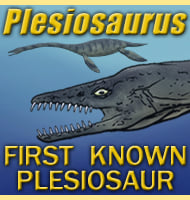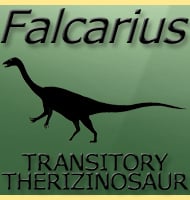In Depth
Of all the pterosaurs Laopteryx probably has the least amount of fossil material attributed to it, only a rear portion of the skull. When Othniel Charles Marsh named it he thought that he was actually dealing with a prehistoric bird. This thinking held true until 1986 when John Ostrom found it to be more similar to pterosaurs. Also a tooth that was attributed to the partial cranium was considered to belong to an unknown crocodylomorph and as such separated from the specimen.
Because only the hind portion of the cranium is known, no one knows what kind of pterosaur Laopteryx actually was. We don’t even know where to place it amongst others in the pterosaur family tree. The lack of fossil material also means that no other material could realistically be attributed to the type specimen on the grounds of lack of distinguishing features that would enable identification. This is why Laopteryx is considered to be an invalid genus by many pterosaur researchers.
It may seem strange that a genus could be named upon such a lack of fossil material, but it should be remembered that Laopteryx was named during the ‘bone wars’. This was a time when Othniel Charles Marsh was fiercely competing with his rival Edward Drinker Cope to name as many different prehistoric species as possible. During this time it was also quite commonplace to name prehistoric creatures based upon only the smallest amount of remains with even some species being described from only teeth!
Further Reading
– Discovery of a fossil bird in the Jurassic of Wyoming. American Journal of Science 31:341-342. – O. C. Marsh – 1881. – The Jurassic ‘bird’ Laopteryx priscus re-examined. – Contrib. geol. Spec. Pap. 3, 11–19. – J. H. Ostrom – 1986.









